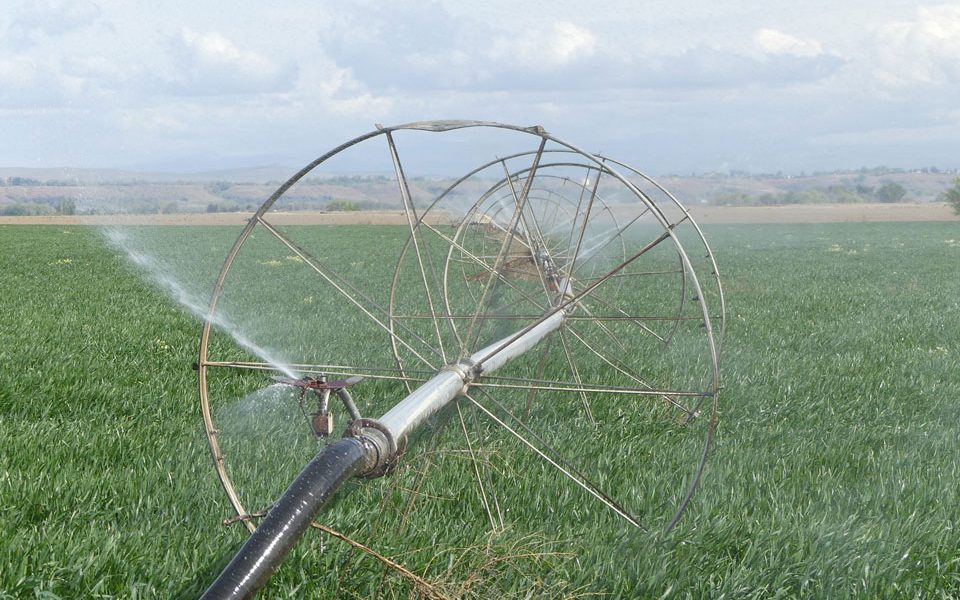
There will be enough water for local farmers and ranchers this year but low snowpack levels mean there could be a shortage in 2019. (The Enterprise/John L. Braese).
VALE – Water powers the region’s biggest economic engine and there should be enough of the wet stuff to go around this year for local farmers and ranchers.
Next year, though, may be different.
Last week all of the area reservoirs showed ample water supply just as the spring planting season kicks into high gear.
That’s the good news.
“Because of our storage and carryover and inflow we got this year, we will be all right,” said Ron Jacobs, state watermaster for Malheur County.
The bad news is that the region’s snowpack levels remain perilously low, potentially setting the stage for a leaner supply of water in 2019. Mother Nature’s water bank depends on snowpack.
The higher the snowpack, the more water that will melt into area rivers and streams and flow into reservoirs.
Across the state, the snowpack is below normal so far this year.
That’s the same story for the Owyhee and Malheur basins.
On April 1, the snowpack for the two basins was 49 percent of normal, the lowest in the state.
The snow storms essential to creating a deep bank of snow pack never arrived this year.
“We never really peaked out. The peak levels were probably 60 percent of normal and that was early in the year,” said Scott Oviatt, a hydrologist for the federal Natural Resources Conservation Service.
Ty King, manager of the Vale Irrigation District, agreed.
“It (snowpack) has not been good at all,” said King.
Reservoir levels locally, though, remain stable. Last week the Owyhee Reservoir was 89 percent full while Bully Creek Reservoir was at 77 percent, Warm Springs Reservoir at 74 percent, and Beulah at 69 percent full. That means most farmers will be in good shape for water through the summer.
“Everyone will get their full allotment of four acre feet of water,” said Brittany Valero of the Owyhee Irrigation District.
But low snowpack haunts the future.
“We are a little concerned about next year,” said Valero.
March storms dropped plenty of rain over the region, which is a good thing short term, said Oviatt.
According to the Natural Resources Conservation Service, March precipitation in the Owyhee and Malheur basins was 110 percent of average. That seems like it should be good news for water users and it is, up to a point.
“Rain is instant gratification for a watershed,” said Oviatt. Long term, however, lots of rain doesn’t help the watershed, said Oviatt. That’s where snowpack is crucial. The higher the snowpack the longer it takes to melt.
“It sustains your flows during the spring and early summer months,” said Oviatt. That, in turn, means there is a steady supply of water for the two basins. Without a series of strong winter storms next winter, the region could face a water shortage in 2019.
“The bank account is low,” said Oviatt.
Stuart Reitz, a cropping systems agent for the Malheur County Extension office, said the future water outlook hinges on Mother Nature.
“I think ideally we would like to have a good winter with snowfall in the mountains that is just consistent from year to year. But the Owyhee watershed is not designed like that. It is a high desert watershed. Some years are great and some are kind of punky,” said Reitz.
Reporter Pat Caldwell: [email protected] or 541-473-3377.




